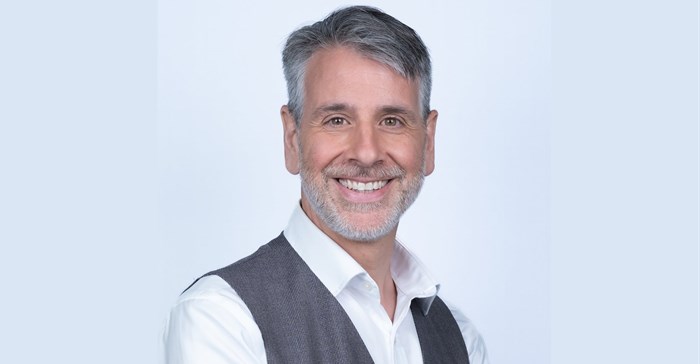The mining industry is on the cusp of a digital revolution. Geovia, a company with a long history in 3D design and geological modelling, is at the forefront of this change. By leveraging the power of parametric design and virtual twins, Geovia is helping mines operate more efficiently and sustainably. Company CEO Mauro DelleMonache explains how this technology is transforming the way mines operate, from reducing environmental impact to optimising resource extraction.

Mauro DelleMonache, CEO of Geovia
So, you primarily serve the mining industry? What kind of solutions do you offer?
Yes, mining is our focus. We’ve been helping the industry visualize and manage resources for a long time. This includes everything from underground deposits to pit design, all brought to life in 3D and virtual twins. Traditionally, we offered desktop-based software for mine engineers and geologists.
You mentioned an evolution from desktop applications to cloud-based solutions. Can you elaborate on that?
Over the past few years, we’ve been aligning ourselves with the cloud revolution. Cloud computing offers vast storage and processing power, allowing us to run more complex simulations. This is key for the future of our technology.
One of the biggest benefits is the concept of a “single source of truth” – a consistent, secure, and collaborative model accessible to everyone involved in a project.
Transitioning to the cloud sounds like a significant undertaking. How did you manage the switch, and what are the challenges for the mining industry?
It’s an ongoing process. Internally, we’ve had cloud capabilities for a while, serving various industries that have readily adopted cloud-based solutions. However, the mining industry presents unique challenges.
Many mining operations are remote and conservative, making them hesitant to move data off-site.
How do you convince these cautious mining companies to embrace the cloud?
Education plays a big role. We showcase the benefits of the cloud, including reduced infrastructure and maintenance costs.
We’ve even seen instances where clients initially requesting on-premise deployments ultimately opted for the cloud after considering bandwidth and overall cost efficiency.
What is the impact of the PGM (Platinum Group Metals) crisis on digital adoption in mining?
The PGM crisis is a major challenge, but it also highlights the need for Africa to position itself for the future. While short-term decision-making based on commodity prices is common, a shift towards longer-term planning is crucial.
Geovia’s technology can support this shift through data-driven insights and future-oriented resource management.
Digital twins sound fascinating. Do you help clients with the entire IoT network setup, or do your solutions integrate with existing ones?
As a software company our core focus is not on building the entire IoT network for clients. However, we’re recognising a shift. Clients increasingly need more than just software implementation; they seek ongoing support throughout the digital journey.
My team has strong domain expertise, and we’re adapting to offer consultancy services alongside software deployment. This ensures clients get the most out of our technology.
For instance, one client expressed a clear desire for on-site support to leverage the full potential of our solution. This highlights the need for a more holistic client engagement model, going beyond just software sales and installation.
This comprehensive approach makes sense, especially considering the complexities of mine management. Will we see companies like yours embed more regional agents to cater to client needs?
Absolutely. The mining industry thrives on a local touch. While the industry is definitely moving towards automation with driverless trucks and other advancements, the human element remains crucial.
Interestingly, these technological advancements don’t necessarily reduce workforce needs. They create a demand for new skillsets, both within mining companies and in supporting industries.
We’re committed to deploying personnel to mine sites while leveraging technologies like our digital twins to maintain strong client engagement. Ultimately, the mining industry remains a “people business” where community plays a vital role.
Geologists using your software now need additional knowledge, perhaps even programming, to navigate local network issues. How is GeoVia addressing this skills gap?
You’re spot on. This skills gap is a major focus for Geovia. One of our strategic priorities is building a robust education program with the future in mind.
We’re transitioning from selling desktop software to geologists to providing entire platforms that consider the geological model. This necessitates a shift in university curriculums to equip future professionals with the necessary skills.
We can play a role in shaping these curriculums to prepare students for the evolving mining landscape.
AI disruption is a concern for many industries. How do you see AI impacting the future of your solutions?
AI, particularly large language models, has immense potential for training and education in the mining sector. However, deploying AI in real-world mine environments requires a science-based approach.
We can’t rely on a “black box” AI that makes decisions without scientific grounding. Explainability and adherence to first principles are crucial for trust in AI-powered solutions.
There’s definitely a place for AI optimisation, though. Imagine automating drafting tasks by feeding specifications into the system. We see this potential in our training business.
Instead of just selling software and offering basic training, high-quality content combined with a strong AI layer can provide a superior value proposition. Users can access information and support through AI-powered assistants exactly when they need it.
This highlights the exciting possibilities of AI integration within the technology stack.
Parametric design allows interconnected components within a model. Changes in one area automatically update other parts of the model, ensuring consistency. This approach is particularly valuable when combining multiple models to create a unique virtual twin
Did this require significant software development changes?
While leveraging existing algorithms, our development team had to recode them to enable parametric design functionality within the broader Geovia software suite. This is an ongoing process with new releases planned over the next few years.
How are you addressing latency challenges in remote locations?
We’re working with network providers to improve overall network robustness, but data sovereignty regulations are a major consideration. While Africa is a promising market, we need to achieve scale before deploying in-country servers.
Are you excited about new network opportunities like satellite deployments?
Our team is pragmatic. While these advancements are positive, security remains a top concern. We offer both cloud and on-premise solutions, allowing clients to choose based on their specific needs and security considerations.
How are you helping clients navigate environmental concerns and achieve their climate goals?
By optimising operations through simulation, technology can minimise unnecessary resource movement, leading to reduced environmental impact. Additionally, we’re exploring the concept of “virtualising” permitting regulations.
Imagine integrating regulatory data into the virtual twin, allowing real-time monitoring of adherence to environmental regulations. This “Sustainable Land Management” capability is still under development, but we’re seeking partners to collaborate on this project.
Can you elaborate on how real-time monitoring and “what-if” scenarios factor in?
The virtual twin allows clients to monitor operations in real-time and run simulations. These simulations can test various scenarios to ensure adherence to social licenses, environmental regulations, and profitability targets.
Who are your main competitors?
The competitive landscape is evolving. Traditional desktop software providers were once our main rivals. However, as we move into the digital twin space, collaboration with these companies becomes more relevant.
There’s a potential for combining our optimisation capabilities with the valuable data these competitors generate, ultimately benefiting the client.











